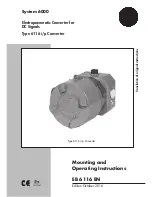
FLEX 8
User Manual
57
6.2 Terms & Definitions
The following terms and definitions are used throughout this guide.
“ASCII”:
American Standard for Information Interchange. The standard code
consisting of 7-bit coded characters (8 bits including parity check) used to exchange
information between data processing systems, data communication systems, and
associated equipment. The ASCII set contains control characters and graphic
characters.
“Aspect ratio”:
The relationship of the horizontal dimension to the vertical dimension
of an image. In viewing screens, standard TV is 4:3, or 1.33:1; HDTV is 16:9, or
1.78:1. Sometimes the “:1” is implicit, making TV = 1.33 and HDTV = 1.78.
“AV”:
Audio visual, or audio video.
A
“Background”
is an unscaled source, typically originating from a computer. A
background source appears at the system’s lowest priority — visually in back of all
other sources.
“Baudrate”:
Named of J.M.E. Baudot, the inventor of the Baudot telegraph code.
The number of the electrical oscillations per second, called baud rate. Related to,
but not the same as, transfer rate in bits per second (bps).
“Blackburst”:
The video waveform without the video elements. It includes the
vertical sync, horizontal sync, and the chroma burst information. Blackburst is used
to synchronize video equipment to align the video output. One signal is normally
used to set up an entire video system or facility. Sometimes it is called House sync.
“BNC”:
Bayonet Neill-Concelman. A cable connector used extensively in television
and named for its inventors. A cylindrical bayonet connector that operates with a
twist-locking motion. To make the connection, align the two curved grooves in the
collar of the male connector with the two projections on the outside of the female
collar, push, and twist. This allows the connector to lock into place without tools.
“Brightness”:
Usually refers to the amount or intensity of video light produced on a
screen without regard to color. Sometimes called “black level.
“
CAT 5
”
:
Category 5. Describes the network cabling standard that consists of four
unshielded twisted pairs of copper wire terminated by RJ-45 connectors. CAT 5
cabling supports data rates up to 100 Mbps. CAT 5 is based on the EIA/TIA 568
Commercial Building Telecommunications Wiring Standard.
“Color bars”:
A standard test pattern of several basic colors (white, yellow, cyan,
green, magenta, red, blue, and black) as a reference for system alignment and
testing. In NTSC video, the most commonly used color bars are the SMPTE
standard color bars. In PAL video, the most commonly used color bars are eight full
field bars. In the computer, the most commonly used color bars are two rows of
reversed color bars.
“Color burst”:
In color TV systems, a burst of subcarrier frequency located on the
back porch of the composite video signal. This serves as a color synchronizing
Содержание FLEX 8
Страница 1: ...FLEX 8 Article No RGB RD UM FLEX 8 E001 Revision No V1 1 USER MANUAL...
Страница 11: ...FLEX 8 User Manual 10 1 2 4 Dimension Following is the dimension of FLEX 8for your reference...
Страница 23: ...FLEX 8 User Manual 22 3 2 5 Output Setting Click Output setting and enter the interface as below...
Страница 38: ...FLEX 8 User Manual 37 TP Choose Board 1 4 Color Choose Signal Souce Color Bar Pure Color Set TP OK...
Страница 46: ...FLEX 8 User Manual 45 Use shortcut key to operate fast and easily...
Страница 52: ...FLEX 8 User Manual 51 Chapter 5 Support...






































